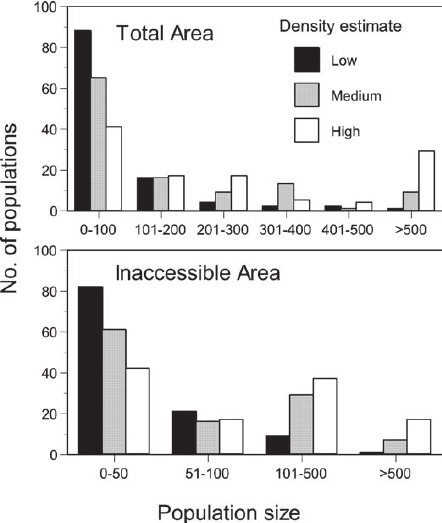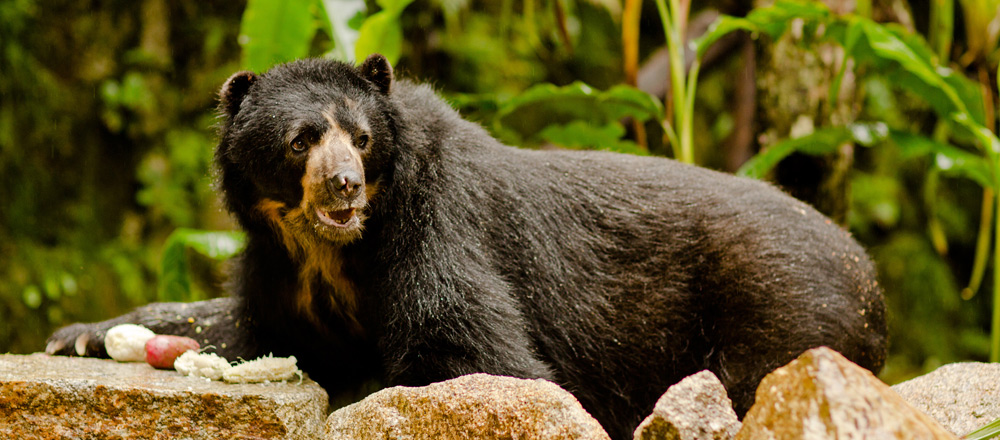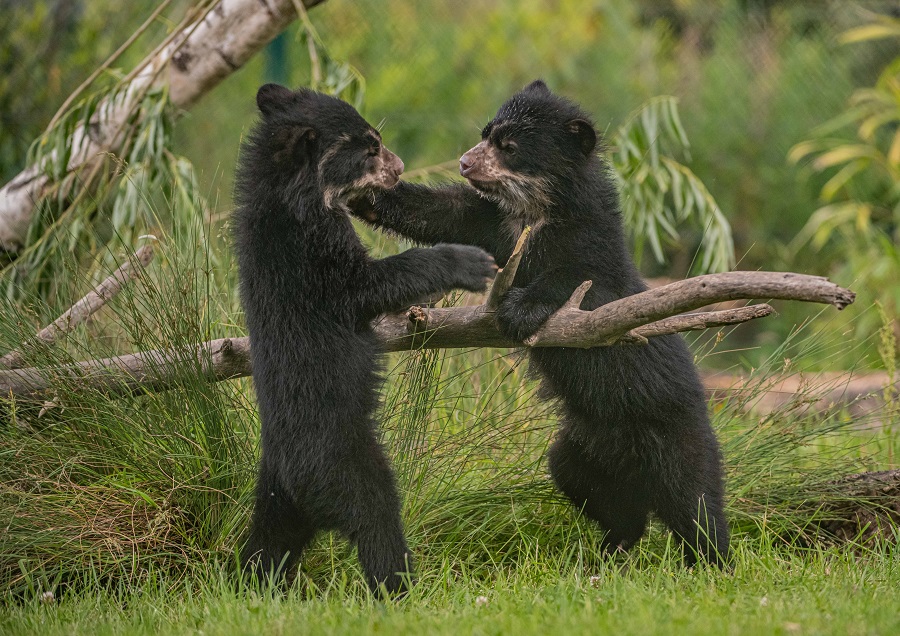STATUS
Near Threatened


Spectacled bears are robust, with a short and muscular neck, short but strong legs. As with all bears, spectacled bears walk on the soles of their feet and have longer front than rear legs, making them excellent climbers.
Fur is usually black, although it can have dark red-brown tones on the upper-parts. Spectacled bears sometimes have white to pale yellow markings around the muzzle, on the neck and the chest. These markings may also be present around the eyes, which is the reason for its common name.
Andean bears no longer live in Chile, where they were first described by Western explorers in 1825. However, they can still be found in many parts of their historical range where habitat remains. Habitat destruction and hunting pose the greatest threats to their survival. Poachers sell bear parts to traditional medicine dealers or eat the bear's meat. In addition, people kill bears where they raid cornfields and because they erroneously believe they kill livestock.
In recent decades, spectacled bear numbers declined dramatically in Venezuela, Colombia and Peru. However, healthy populations remain in Ecuador and Bolivia. The Andean bear shares its habitat with many other animals. By protecting Andean bear habitat, conservationists hope to protect these and many other animals,

STATUS
Near Threatened

SCIENTIFIC NAME
Tremarctos ornatus

POPULATION
only 10,000 in the wild

LENGTH
5 to 6 feet (1.5 to 1.8 meters) long

WEIGHT
up to 340 pounds (154 kilograms)

HABITAT
FORESTS

The spectacled bear is the only species of bear in South America and one of the most emblematic mammals of the tropical Andes.
These bears are incredibly adaptable, able to navigate diverse habitats created by the Andes Mountain range including tropical rainforest, cloud forest, and scrubby, high altitude tundra known as páramo through the seasons in search of food.
This bear is constantly threatened due to changes in territory use, which has fragmented its habitat size, as well as hunting by humans (usually in retaliation of perceived livestock attacks or for use of their body parts for traditional medicine and rituals).
The Andean bear is the last remaining of the family of short-faced bears, and the only bear species found in South America.
Recent estimated population sizes for most areas are small, with a total estimate for the Northern Andes (excluding most of Peru, Bolivia and northern Argentina) comprised anywhere between 6,000 and 10,000 individuals.




